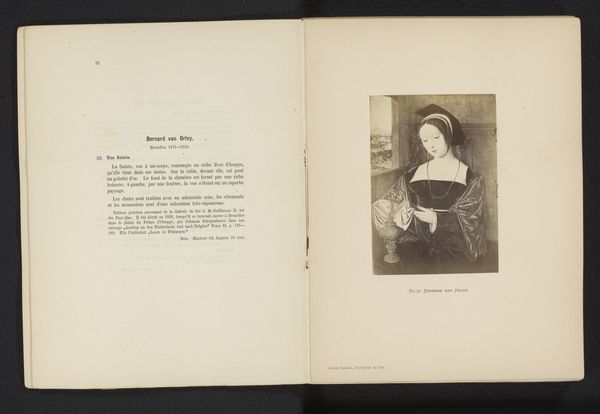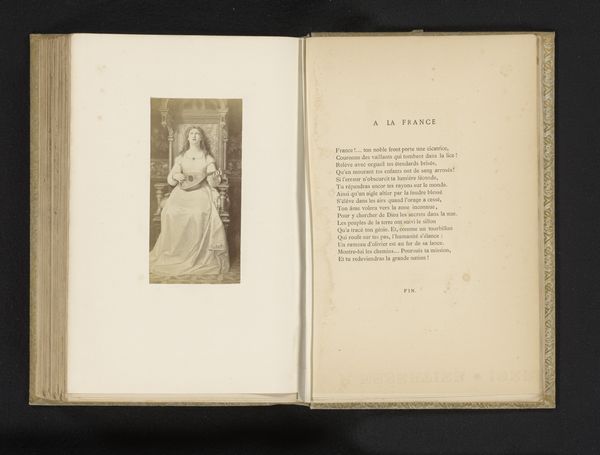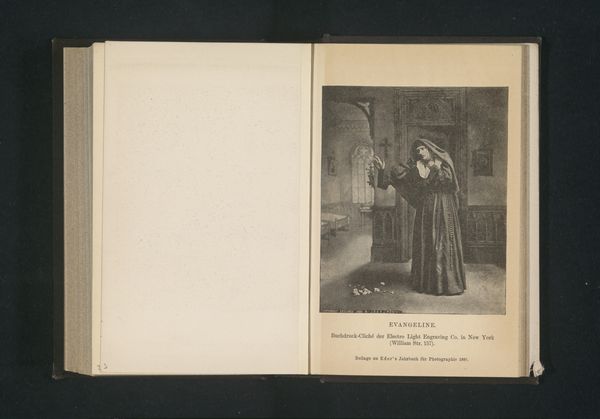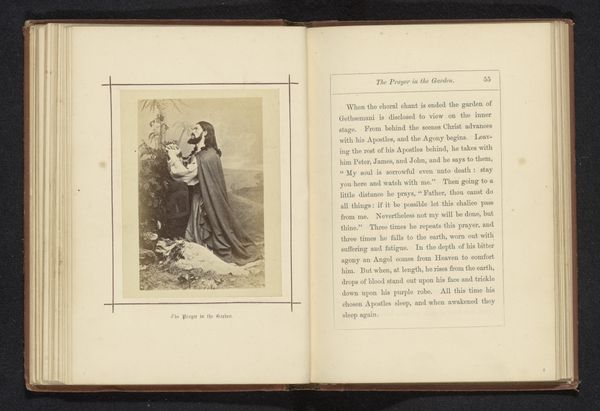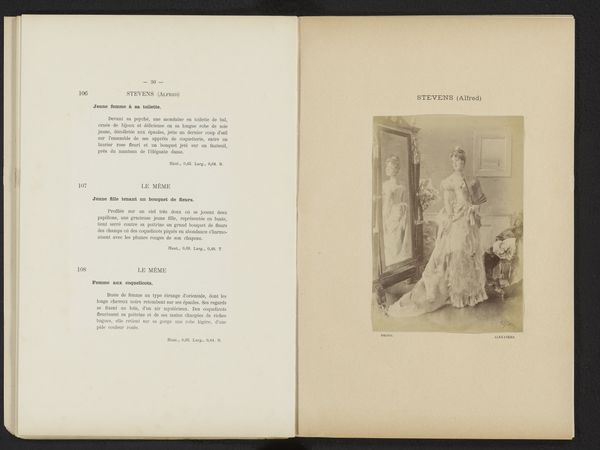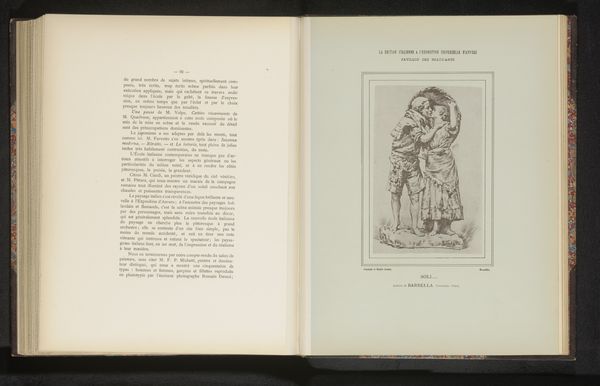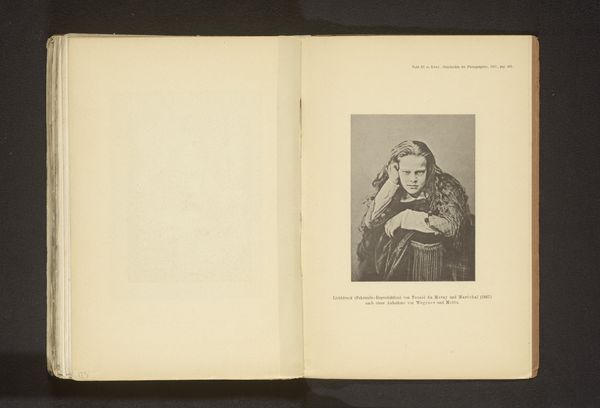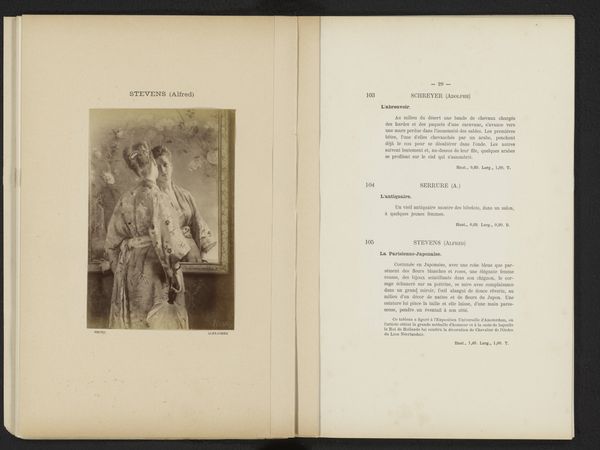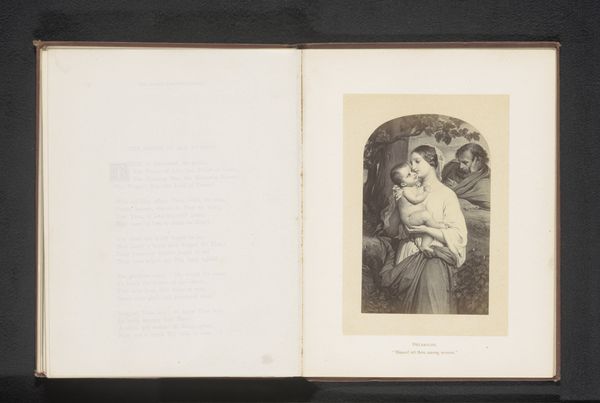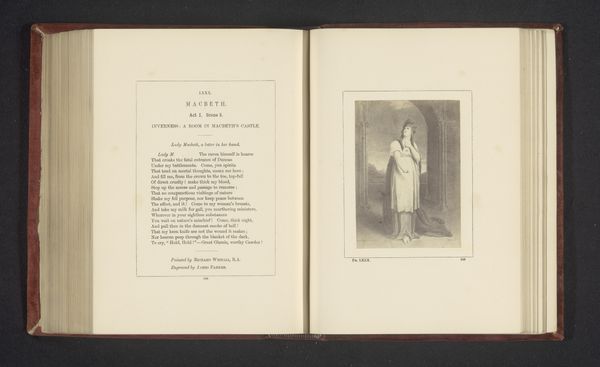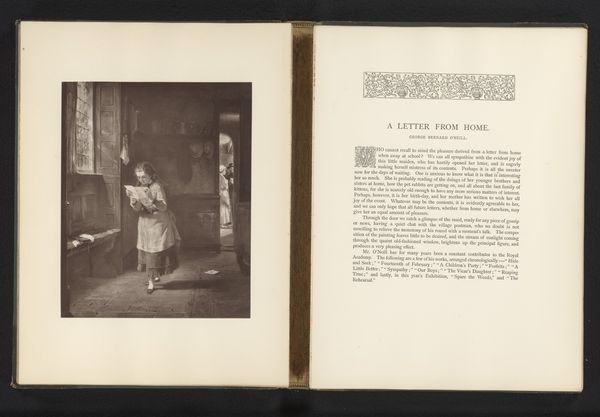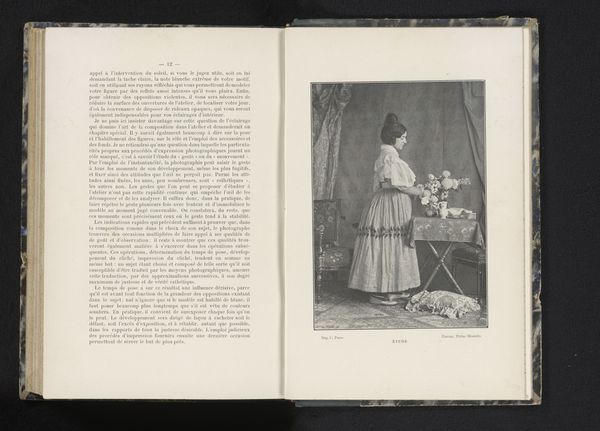
print, photography
#
portrait
#
medieval
# print
#
landscape
#
figuration
#
photography
#
italian-renaissance
Dimensions: height 142 mm, width 103 mm
Copyright: Rijks Museum: Open Domain
Editor: Here we have "Fotoreproductie van een schilderij van Maria met kind," or, a phot reproduction of a painting of Mary with child, dating from before 1876. It looks like a print in a book. I'm struck by how a fairly common religious scene can be mediated through multiple layers of production – from painting to photograph to print. What do you see in this layering of processes? Curator: It's precisely that layering, the physical transformation, that interests me most. Think about the materials involved: the artist's paints, the chemicals used in the photographic process, the ink and paper of the print, and the labor required at each stage. It highlights the means of production, revealing how images are not simply "captured" but actively constructed through material processes. The use of photography to disseminate a painted image, once only accessible to an elite, democratizes access but also alters the value of the original. Editor: That's fascinating! It makes me think about the relationship between the original artwork and its reproduction. Is the photograph a debasement of the painting or something else entirely? Curator: The reproduction changes the function and value of the image. Consider how this print would have circulated, perhaps used for study, devotional purposes, or as a status symbol among the rising middle class. The very act of reproduction transformed a unique art object into a commodity, raising questions about accessibility, ownership, and the shifting definitions of "art" itself. What about the physical act of holding a book open to this image - how might that influence one's understanding of the image? Editor: I never thought about it that way. Focusing on the materials and the production process really opens up new avenues for understanding the artwork's role in society. Thanks! Curator: Indeed. Examining the material reality challenges the notion of art as purely aesthetic. It allows us to see it as a product of labor, technology, and social relations.
Comments
No comments
Be the first to comment and join the conversation on the ultimate creative platform.
